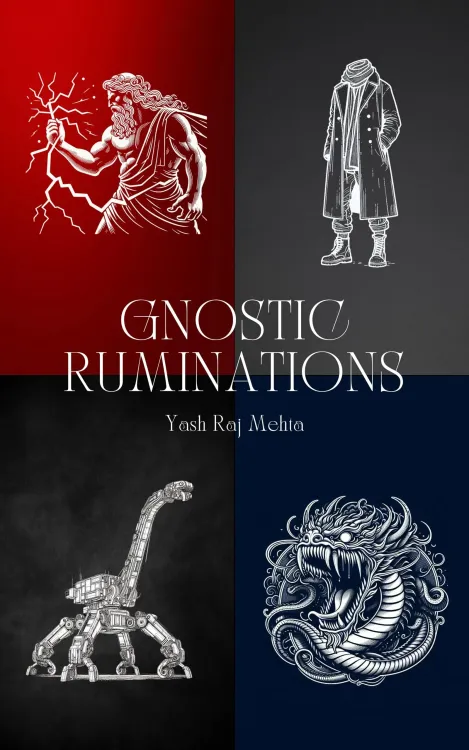What Insights Does 'Gnostic Ruminations' Offer? (Book Review)

Synopsis
Key Takeaways
- Deep reflections on the human condition.
- Exploration of mythology and history.
- Use of blank verse for smoother communication.
- A unique blend of humor and seriousness.
- Encouragement for readers to engage with cultural references.
New Delhi, June 30 (NationPress) "Through smog and soot and horrid dust,/You will have to endure/To make a wage..." This line serves as a more eloquent commentary on our polluted urban landscapes and the necessity to navigate the compromised air in pursuit of our daily income than the most extensive study.
Beyond this grim yet honest portrayal of modern urban challenges, the collection presents a plethora of diverse themes from the same author.
Poetry, akin to all literary forms, is inherently subjective. Yet, occasionally, a compilation emerges that captivates readers with its deep contemplations on the human experience and its fundamental issues—particularly life, death, our environment, and the consequences of our actions. Furthermore, it revives forgotten myths and cultures from the obscured corners of history, infusing them with a contemporary essence.
The title itself—"Gnostic Ruminations" (Book Leaf Publishing)—exemplifies the skill, vibrant storytelling, and expansive imagination of young poet Yash Raj Mehta. Most of its 21 poems were penned in a single day during a poetic competition, while others were previously crafted for various occasions, shedding light on academic milestones and influential figures.
Mehta, whose succinct body of work is the result of two years of devoted writing, describes the poetic form as "fascinating", humorously suggesting that if the adage claiming a picture is worth a thousand words were inverted, the result would be poetry.
He references great epics, including the Ramayana and Mahabharata, using their structures to support his argument in these 20-plus poems, which cover topics ranging from the esoteric to the essential.
Mehta's preferred style largely deviates from traditional rhyming schemes, favoring blank verse. The young poet asserts that this approach "conveys information more smoothly", citing renowned translations of Virgil's "Aeneid" that utilize this method instead of couplets.
However, it's time to delve deeper into a representative selection of Mehta's poetry.
We begin from the depths, exploring the realms of the Old Testament as we traverse the somber landscapes of the scriptural "The Valley of Hinnom" near Jerusalem, or Gehenna, the etymological root of the Arabic 'Jehannum', and reflect on the burden of religious history and its ramifications.
But fear not, as Mehta seamlessly transitions to the sonnet form to honor his academic mentors, pens a heartfelt farewell to his school seniors, and then injects humor—along with rhyme—into his musings about bedbugs.
This unpredictability is the joy of the collection, as each page turn reveals new surprises.
Amidst his serious explorations into mythology and faith, Mehta occasionally returns to relatable, everyday subjects, showcasing a rare wit throughout the slim volume. "Criticism of Haikus" is a spirited example that demands reading.
In addition to the Holy Land, Mehta's verses traverse the Greece of "Zeus Giaskronou", the realms of Babylonian and Norse deities, and various serpentine motifs, while also addressing environmental concerns, as highlighted in the opening lines.
The anthology is not just a thought-provoking experience; it is an intellectual journey, as Mehta does not simplify matters by providing footnotes, instead inviting readers to pursue understanding of the referenced material independently. Thus, along with vivid narratives, readers can expand their knowledge.






